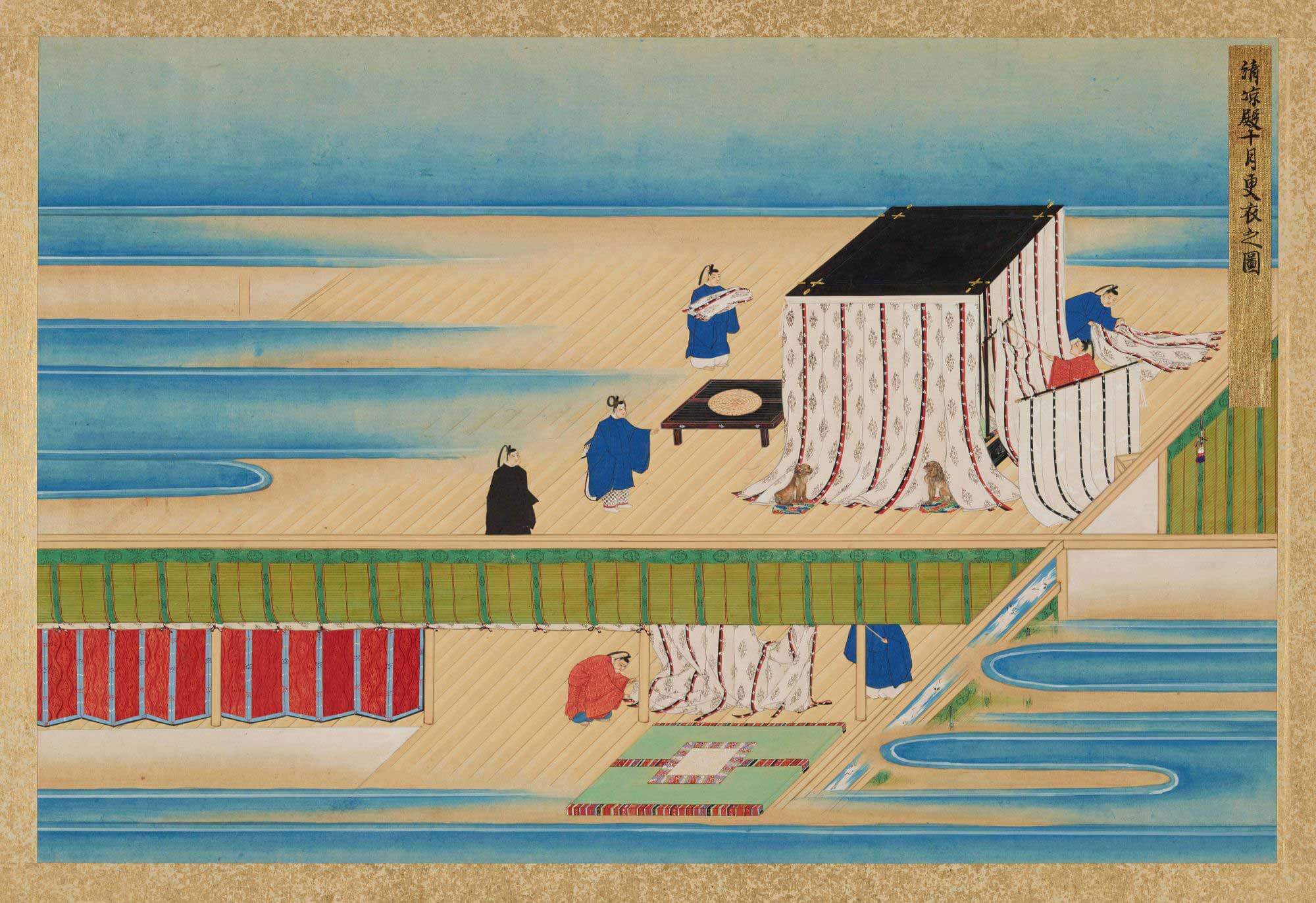I grew up in Tokyo. Summer is hot and unbearably humid.
Climate change is exacerbating the issue today, according to my sister, who lives in the city. Every summer, after confirming the end of tsuyu, rainy season, I helped my mother transform our living space from winter & spring to a summer one.
We call it a ‘living space-koromo-gae’.
My mother sent heavy bedding, cushion covers, and curtains to the cleaners, and we replaced them with ones made of lighter-colored (white, blue, light grey), lightweight, and breathable materials - cotton and hemp. We stored the storm windows in their designated place and installed straw blinds. We removed paintings that depicted spring, autumn, and winter from the walls and hung those with a summer theme instead.
For tableware, we swapped heavy ceramic dishes for blue-and-white porcelain plates and bowls, along with glassware. We had an air conditioning unit installed, but also placed a few large electric fans at strategic locations. I retrieved a summer cotton umbrella from the closet and put it in the umbrella stand at the front door of the genka for ready use.
This transformation – takes time and labor - significantly changed how we felt and lived in the space – calmer, lighter, relaxed, airy, cool, and enjoyable, even though we still sweated a lot.

The above painting depicts the October Koromogae 十月 at the ancient imperial court.
They could afford to do koromogae every month!
Image courtesy of the “Kujirōku' illustrations” housed in the
Library of the Imperial Household Agency's Archives and Mausolea Department.
In addition to the living space, we also introduce meals with a summer theme at the table.
We utilize fresh, seasonal ingredients, quick and light cooking methods, focusing on refreshing flavors, and serving some of the dishes cold.
Sunomono 酢の物, a vinegared dish in which vegetables, seafood, and other ingredients, dressed in a rice vinegar-based sauce, is one of the summertime favorites.
The main ingredient of the sauce, rice vinegar, known as komezu 米酢, has numerous health benefits beyond providing a tart and refreshing flavor to prepared summer dishes.
The various amino acids and organic acids present in rice vinegar help to improve our appetite and promote good digestion. Strong acidity of the rice vinegar - pH (measure of acidity) is 2.8 to 3.1 - helps to slow the multiplication of harmful food-borne bacteria.
Other popular summer dishes served cold include:
- Hiyashi-chukasoba 冷やし中華
Ramen noodles served cold with vinegar added sauce - Hiyayakko 冷ややっこ
Cubed chilled silk tofu served with various toppings and soy sauce - Hiyashi-shabu 冷やししゃぶ
Quick-cooked, thinly sliced pork served with salad greens and ponzu sauce - Namban-zuke 南蛮漬け
Deep-fried ingredients lightly marinated in rice vinegar, sugar, and shoyu sauce
While these cold dishes are tempting in hot weather, overconsumption of cold dishes can cause the body, especially the stomach, to become overcooled, weakening the digestive system.
Yakuzen, the Japanese counterpart of Traditional Chinese Medicine, recommends adding ingredients with warming properties.
These ingredients include such items as ginger, shiso leaves, scallions, mustard, and garlic, to cold dishes to balance their temperature. We refer to these warming herbs as yakumi 薬味, or medicinal herbs, because they possess either antibacterial or antimicrobial properties, making them suitable for consumption during the hot months.
My Koromo-gae season recipes include a sunomono salad, a namban chicken, and a somen in hiyashi-chukasoba style.









